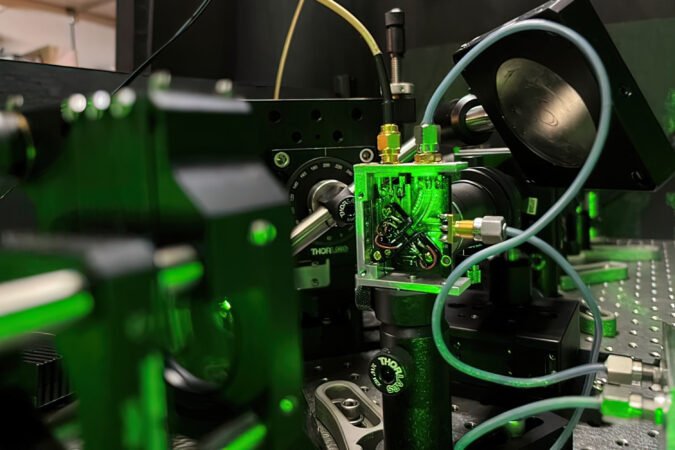Summary Points
-
Breakthrough in Quantum Coherence: MIT physicists improved coherence times of nuclear-spin qubits by 20 times, reaching up to 3 milliseconds, crucial for advancing quantum sensors, gyroscopes, and memory applications.
-
Innovative Unbalanced Echo Technique: Inspired by noise-canceling headphones, the team developed an "unbalanced echo" to effectively manage noise from heat, enhancing qubit performance by offsetting detrimental nuclear-electron interactions.
-
Potential for Vast Improvements: The research suggests that further enhancements could extend coherence times significantly, with prospects for hundreds or thousands of times longer coherence if additional noise sources are addressed.
- Wide-ranging Applications: Beyond quantum computing, the new system’s capabilities could enable sensitive measurements in various fields, including non-destructive testing in engineering, temperature mapping in biology, and potential advancements in quantum memory without risking data loss.
MIT Researchers Enhance Quantum Devices by Canceling Noise
By [Your Name]
MIT physicists have made a significant breakthrough that could advance quantum devices, such as sensors and computers. They applied noise-canceling techniques, similar to those found in headphones, to improve the coherence times of qubits. This innovation could lead to more reliable quantum technology.
Led by Ju Li and Paola Cappellaro, the team achieved a 20-fold increase in coherence time for nuclear-spin qubits. Their findings appear in the journal Physical Review Letters. Guoqing Wang, a recent doctoral graduate, served as the first author of the study.
Li highlighted the ongoing challenge in quantum information, stating, "Nuclear spin ensembles are attractive for sensors and quantum memory, but they lose information quickly due to electronic spins." Their method, known as the "unbalanced echo," allows specific noise sources to enhance coherence. By characterizing how heat impacts interactions, they managed to extend coherence times from 150 microseconds to 3 milliseconds.
Experts view this as a major advancement. Dmitry Budker, a leader in quantum sensing, praised the research, noting its practical applications. He emphasized that the team’s technique could be relatively easy to implement for future quantum devices. Gregory Fuchs, a professor at Cornell University, also recognized the importance of this research for rotation sensing, an essential application.
Their experiments involved approximately 10 billion atomic-scale impurities in diamond called nitrogen vacancy centers, or NV centers. Wang explained the challenge of synchronizing these "clocks" since they vary slightly in their quantum state. They aim to leverage the collective power of these NV centers without losing coherence.
The team’s previous work laid a theoretical foundation explaining how temperature and strain affect the system’s interactions. Wang further elaborated on using different interaction noises to selectively cancel each other, a critical aspect of their unbalanced echo method.
Looking ahead, the team plans to explore other potential sources of noise, such as electrical field interference. They hope this could lead to even longer coherence times. "We are optimistic about achieving further improvements," Li noted. The implications of their work extend beyond quantum memory to various applications. These could include electrical current sensing in electric vehicles, structural health monitoring of bridges, and even advancements in biological research.
This breakthrough could potentially revolutionize quantum computing, offering a way to increase coherence time without losing valuable information. As researchers dive deeper into noise management, the possibilities for quantum devices continue to expand.
Researchers received support from several organizations, including the Defense Advanced Research Projects Agency and the National Science Foundation. Their work paves the way for future advancements in quantum technology, opening doors to applications previously thought unattainable.
Discover More Technology Insights
Stay informed on the revolutionary breakthroughs in Quantum Computing research.
Discover archived knowledge and digital history on the Internet Archive.
QuantumV1

